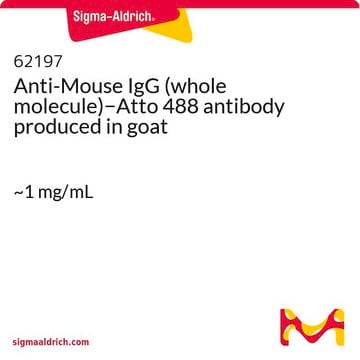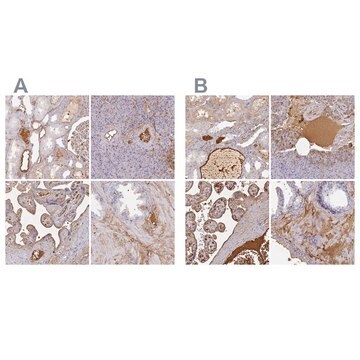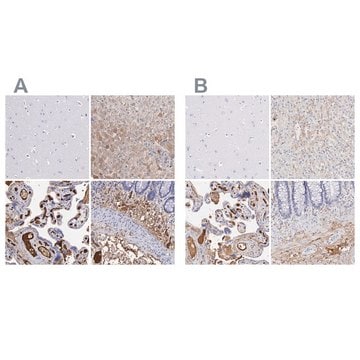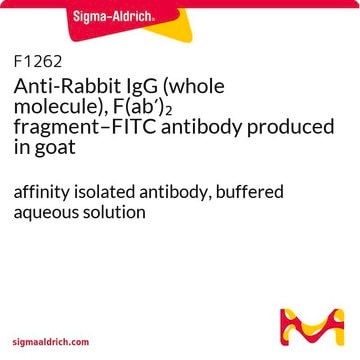18772
Anti-Rabbit IgG - Atto 488 antibody produced in goat
whole molecule, 1 mg/mL protein
Synonyme(s) :
Atto 488-[goat-Anti-rabbit IgG], whole molecule
About This Item
Produits recommandés
Conjugué
Atto 488 conjugate
Forme d'anticorps
affinity isolated antibody
Type de produit anticorps
secondary antibodies
Clone
polyclonal
Contient
50% glycerol
Espèces réactives
rabbit
Concentration
1 mg/mL protein
Technique(s)
immunocytochemistry: 1:500
immunofluorescence: 1:200
immunohistochemistry: suitable
Fluorescence
λex 485 nm; λem 552 nm in PBS
Conditions d'expédition
wet ice
Température de stockage
−20°C
Modification post-traductionnelle de la cible
unmodified
Description générale
Atto 488 is a labeling dye with high molecular absorption (90,000) and quantum yield (0.80) as well as sufficient Stokes shift between excitation and emission maximum. It is optimized for excitation with an argon laser, and is characterized by high photostability. Atto fluorescent labels are designed for high sensitivity applications, including single molecule detection. Atto labels have rigid structures that do not show any cis-trans-isomerization. Thus these labels display exceptional intensity with minimal spectral shift on conjugation.
Immunogène
Application
Forme physique
Remarque sur l'analyse
Informations légales
Clause de non-responsabilité
Not finding the right product?
Try our Outil de sélection de produits.
Code de la classe de stockage
10 - Combustible liquids
Classe de danger pour l'eau (WGK)
WGK 3
Point d'éclair (°F)
Not applicable
Point d'éclair (°C)
Not applicable
Certificats d'analyse (COA)
Recherchez un Certificats d'analyse (COA) en saisissant le numéro de lot du produit. Les numéros de lot figurent sur l'étiquette du produit après les mots "Lot" ou "Batch".
Déjà en possession de ce produit ?
Retrouvez la documentation relative aux produits que vous avez récemment achetés dans la Bibliothèque de documents.
Les clients ont également consulté
Articles
Immunoblotting (Western blot transfer) is a common technique in modern proteomics research.
Notre équipe de scientifiques dispose d'une expérience dans tous les secteurs de la recherche, notamment en sciences de la vie, science des matériaux, synthèse chimique, chromatographie, analyse et dans de nombreux autres domaines..
Contacter notre Service technique









